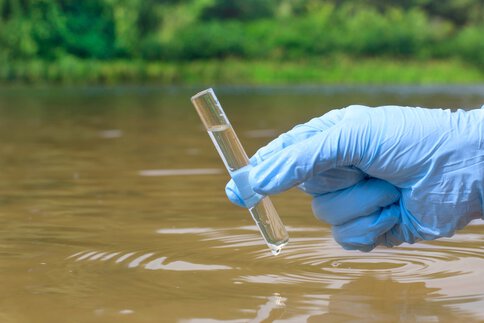Sustainable plastics: Recycling needs analysis
There are hundreds of different types of plastics. Their diversity is convenient for their application, but it becomes a problem for recycling. For the production of high-quality products from polymer waste, the plastics have to be separated into pure fractions of the different types. Otherwise the material properties will be compromised. Analytical methods pave the way into the closed-loop economy.
In Germany alone several million tons of plastic waste are produced every year, of which only about one third is recycled. For glass packaging, however, the recycling rate is between 85 and 90 per cent. The recycling of plastics is still a challenge, because plastic waste is usually collected as a mixture of many different materials. Thus, the labels of polyethylene terephthalate (PET) bottles sometimes consist of different plastics, such as polyethylene, polypropylene or even polyvinyl chloride (PVC). Different thermoplastic polymers can be melted together, but they do not mix well. With a portion of just a few per cent of foreign substances in the recycled material, grain boundaries will form, which result in poorer material properties and, therefore, in downcycling. For reprocessing without quality losses, pure plastics are required. Apart from physical separation methods, scanners for near-infrared spectroscopy are used for sorting plastic waste.
Apart from that, sorting systems based on fluorescence spectroscopy are being tested. One possibility is to add fluorescent labels to the polymer materials during production. When these plastics are exposed to UV light, they will light up characteristically and can then be sorted. A method using the specific fluorescence of polymers without the need for added tracers is also being investigated.
The reuse of plastics is always a balancing act between protecting resources and consumers. According to the EU chemicals regulation Reach, recycling companies have to ensure that the reprocessed materials do not contain any harmful substances. For industrial waste, they can rely on information from the upstream supply chain. For the recovery of polymers from household waste, however, an extensive laboratory analysis is usually inevitable.
This might be also of interest to you
Microplastics everywhere
Tiny plastic particles contaminate water and soil. Detection of microplastics.

Find out about the trends and developments in fields of sustainable plastics at analytica:
polymer • plastics • polymer analysis • analysis • recycling • downcycling • NIR spectroscopy • fluorescence spectroscopy • pure

